I started this essay as a addition to the April creative prompts as I wanted to dive into more detail and provide examples from my own practice, but life got into the way, so I am posting it now, in May :)
Why to study the work of other artists?
This is one of the oldest forms of art education that invites you to look closer and explore the work of those artists, who are further on their creative journey. By the way, by masters I don’t mean only “old masters“, but also contemporary artists that inspire you! Through studying work made by others you can discover their process, techniques and approach to self-expression, while developing your own skills and voice.
Check out the multiple ways to study the masters beyond making copies here:
How I approach master studies
(1) Copy, learn and integrate
I never actually did a proper “master study” in a traditional sense and most of the copying happened as a result of taking classes from other artists. I think it is a powerful and valuable learning technique, especially for self-taught artists like me.
My process looked like this:
Look at the work and figure out what I really like, focus on these characteristics when creating the “copies”.
Create a loose copy, using my own materials, not trying to be super precise. At this stage the work looks mostly like the original, so I wouldn’t call it “my work”.
Create 2-3 studies like that and stop looking at the original work. Start drawing inspiration from various sources and using the “copies” to guide me.
Start mixing different things and distance myself from the originals, whilst still being inspired by them and using the lessons I learned.
Usually at this stage I already come up with original ideas and I am able to call the resulting pieces “my work”.
Some of my first mixed media and collage work was heavily influenced by Laura Horn’s courses (I took a lot of them and loved them all!), but looking at this photo you wouldn’t recognize it as “her work”, because I followed this logic of gradually distancing myself from her original pieces:

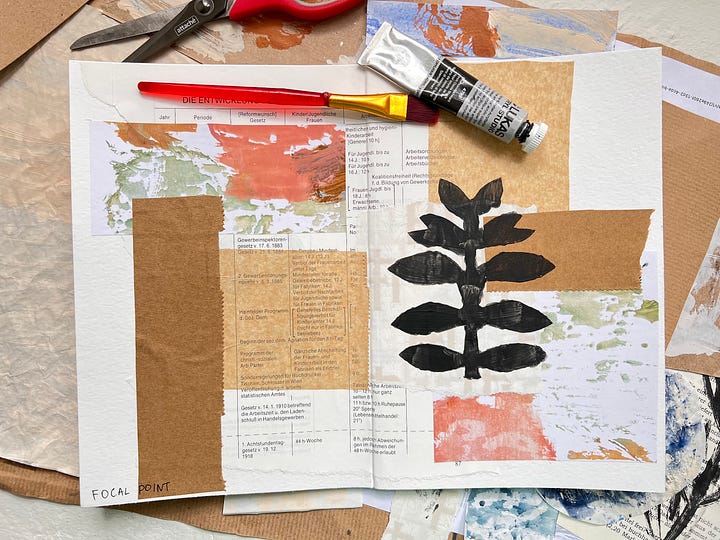
(2) Quick studies
This is sort of a “draw it in your style under 5 minutes challenge” approach.
I usually choose an artwork and create super quick (3-5 minutes) studies. The focus is on capturing the composition, colours, textures and shapes, not on copying as such.
For example, I recently created several quick studies (probably in less than 3 minutes) inspired by Rachel Ruysch and her work. My take on her tulips is more of a way to explore floral arrangements against dark backgrounds without the aim of copying her detailed style at all.
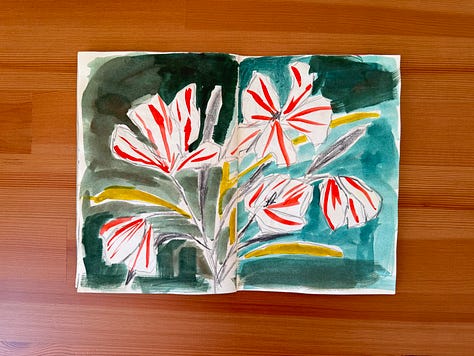
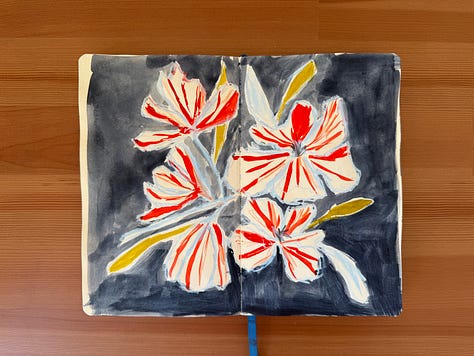
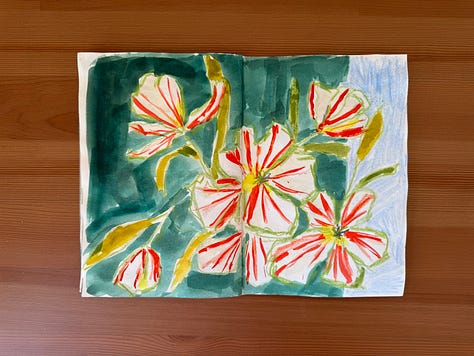
In April I attended a lovely session hosted by
and and we were doing quick master studies of famous still life paintings. I decided to use some coloured pencils and brush pens to create these: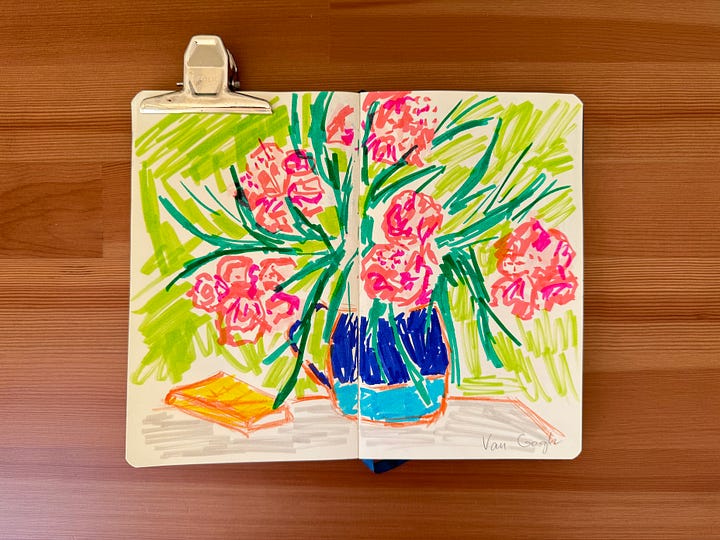
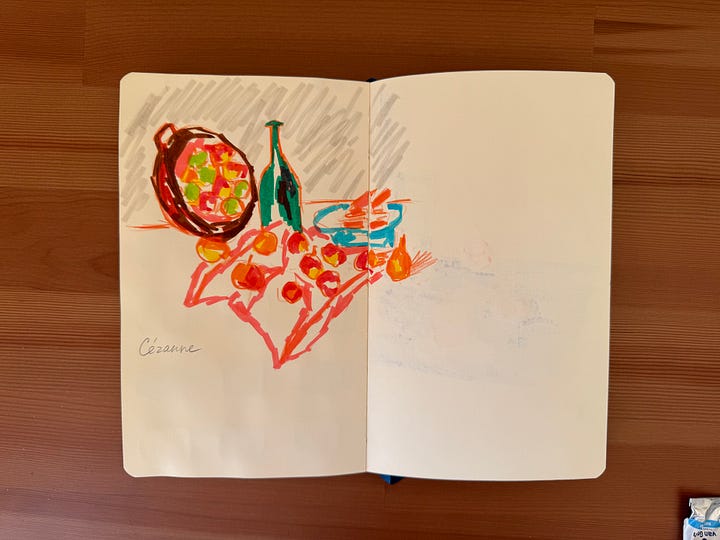
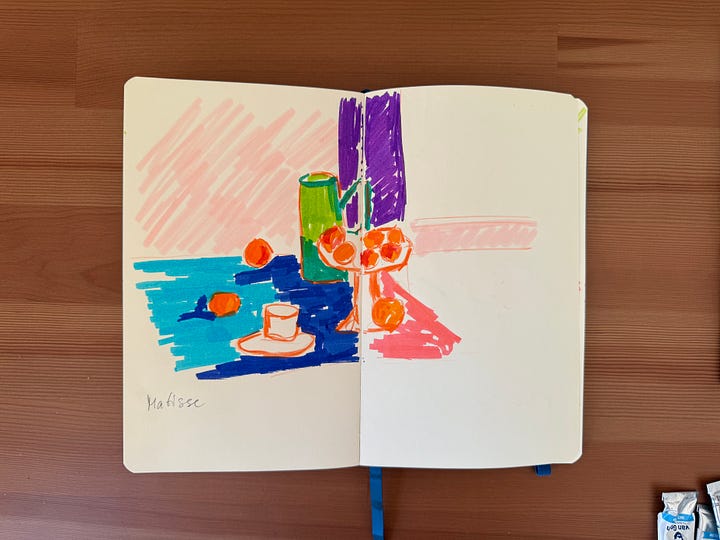

(3) “Zoom in” on specific elements of the work
Frequently I would change the materials used in the original pieces and create colour swatches, compositional thumbnails, collage compositions, etc. to focus on characteristics I want to see more in my own work. For example, I did a collage study of some of the paintings by the Swedish artist Hilma af Klint focusing mostly on colours and shapes. Also, within my 100 days project 2025 I created several collage pieces based on Van Gogh’s landscapes to explore new types of compositions.
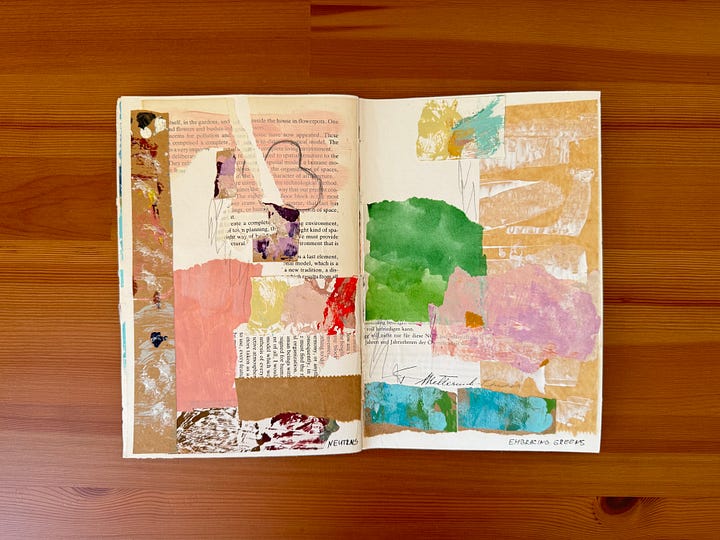
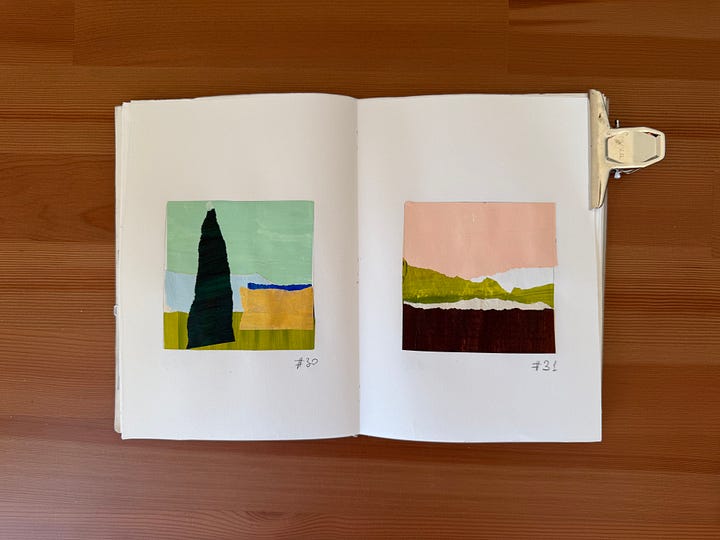
Copying vs studying?
If it’s a replica or even still recognizable as a particular work from a particular artist then it cannot be called your own work. These pieces are only for you to learn from and to improve your skills.
If the influence can be guessed, but the work itself isn’t copying completely and you added your own ideas and made your own aesthetic choices then it is fine to call it your work.
It can be a thin line, I know! But I think it’s pretty clear that plagiarism is bad and it's usually not that difficult to notice.
Artists have been influencing other artists for centuries - we all learn and borrow from other artists in some way. It is wise to draw inspiration from a variety of sources, so you wouldn’t be influenced by one person only.
Also, a lot of the time I prefer to study the process, not the artwork as such - e.g. how does their process looks like from studies to finished work, etc.
Thank you for reading and being here! You’re all very welcome in this space. Feel free to share this post with an art friend!
I’ll be happy to hear from you in the comments! How do you approach master studies? What do you think about copying vs studying?
Until next time!
Lisa





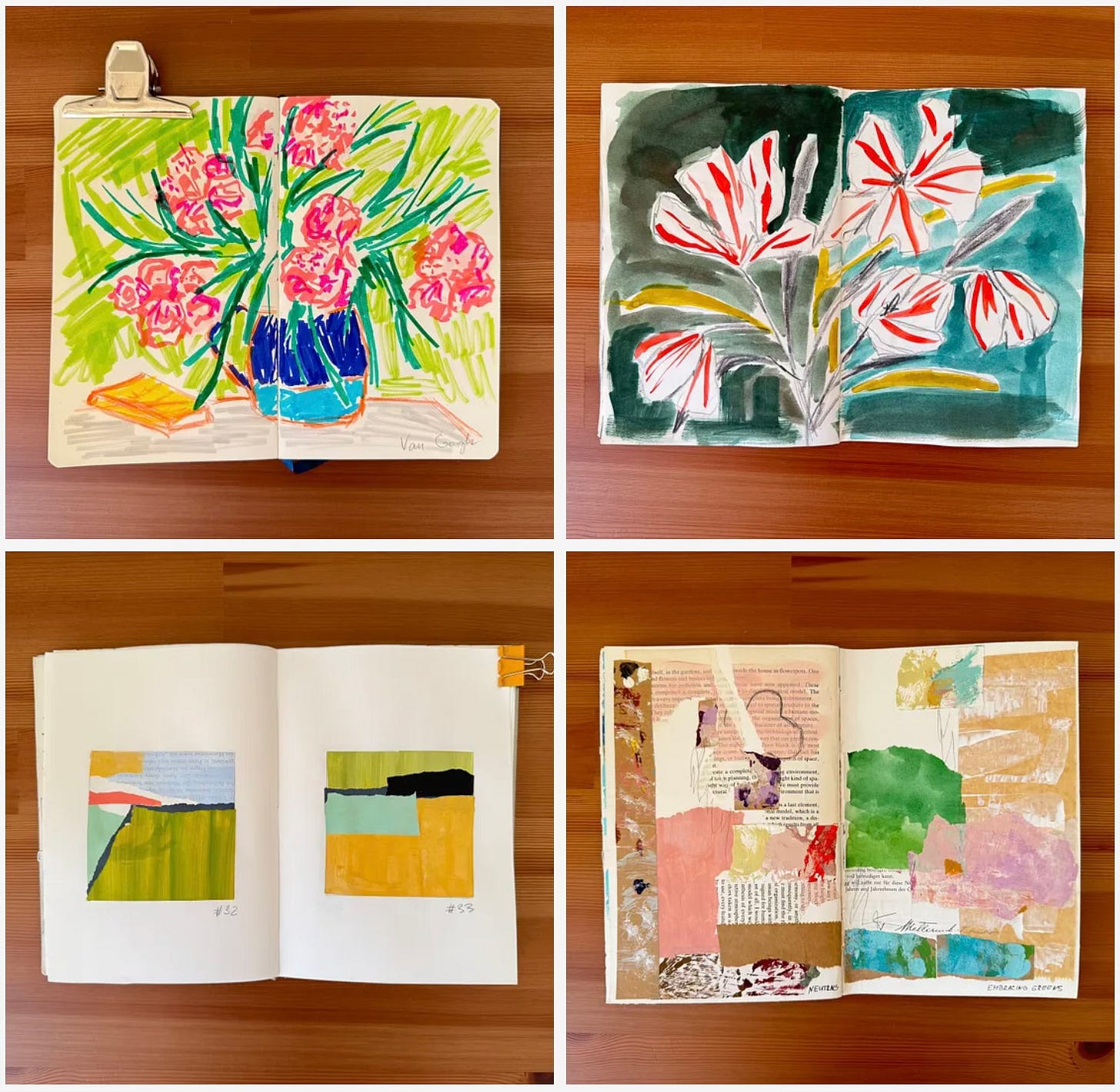

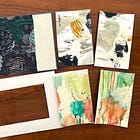
This was super useful, I used to “hate” / don’t understand Master studies and only this year it become more clear that can be important as a form of exploration while studying and find new ways to create!
I am a big fan of the “zoom in” approach and taking one single aspect of age to practice with—it’s been a way for me to slow my practice.